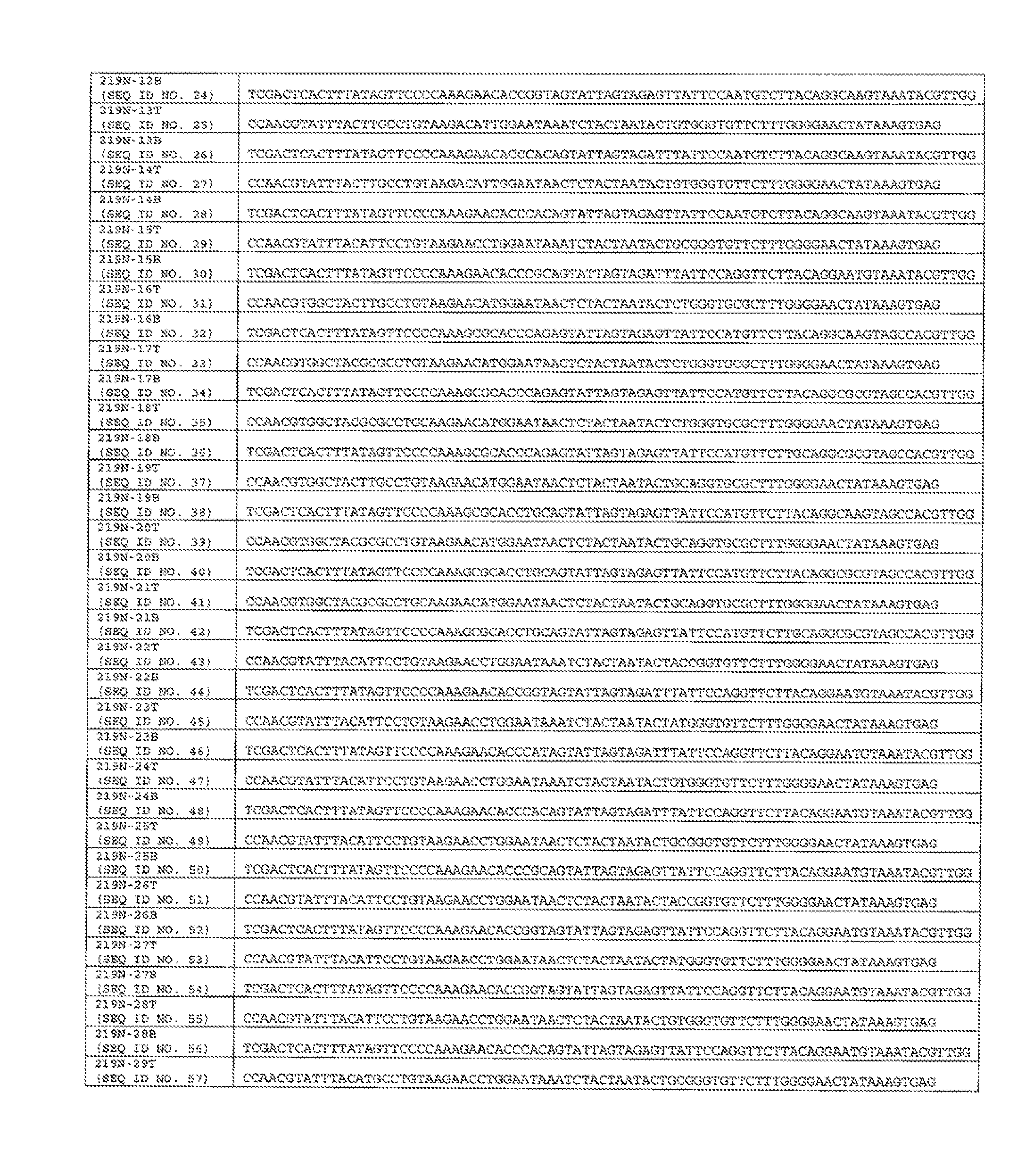Compositions Comprising Lysostaphin Variants And Methods Of Using The Same
a technology of lysostaphin and variants, which is applied in the direction of enzyme stabilisation, antibacterial agents, peptide/protein ingredients, etc., can solve the problems of reducing its efficacy and being highly lethal, and achieve the effect of facilitating the production of messenger rna
- Summary
- Abstract
- Description
- Claims
- Application Information
AI Technical Summary
Benefits of technology
Problems solved by technology
Method used
Image
Examples
example 1
Materials and Methods
[0097] Genetic Modification of the Lysostaphin Gene. Plasmids were constructed for the expression of recombinant lysostaphin variants (e.g., displaying reduced immunogenicity) that displayed bactericidal activity. This was accomplished using synthesized, oligonucleotide pairs that, when annealed together, were designed to encode variant DNA sequences corresponding to amino acids 222-239 of lysostaphin. The paired oligonucleotides were further designed to comprise restriction endonuclease sites (e.g., MscI and SalI) for the cloning of this fragment into an expression vector, pJSB40 (See FIG. 6) for the expression of variant, full length lysostaphin.
[0098] pJSB40 was constructed by using the lysostaphin expression plasmid pJSB28 (See, U.S. Patent App. Pub. No. 20050118159) and replacing the arabinose-based expression upstream control elements with T7-based expression upstream control elements. Polymerase Chain Reaction (PCR) was used to amplify a fragment of the...
example 2
Analysis of Lysostaphin Peptide Sequences
[0113] A complete analysis of overlapping 12-mer peptide sequences across the entire lysostaphin sequence was conducted. An algorithm (EPIMATRIX algorithm, EPIVAX, Inc., Providence, R.I.) was used to identify lysostaphin T-cell epitopes. These 12-mer peptides were analyzed against 8 common human MHC class II alleles for their ability to be bound by any of these class II alleles. Only those peptides sequences with resulting EPIMATRIX Z-Scores ≧1.64 were selected for further evaluation (See FIG. 4). Forty-nine such frames were identified as having at least one “hit,” many of which fell in close proximity to each other to form a “cluster.” Eight such clusters were identified that comprised 79% of the total number of predicted hits. Of these, four clusters (LYS030, LYS070, LYS108, and LYS219) contained the highest number of positive “hits”.
example 3
Characterization of the Immunogenicity of Lysostaphin Peptide Sequences
[0114] In order to evaluate the immunogenicity of each of the 8 predicted clusters referenced in Example 2, an elispot assay using lysostaphin-exposed blood was performed. Briefly, a microtiter plate was coated with anti-lysostaphin antibody and then the various lysostaphin peptides were added. Human peripheral blood mononuclear cells (PBMC) were added to the wells, and interferon-γ production was quantified. The level of IFN-γ production indicated the level of T-cell activation elicited by the various peptides and correlated to their levels of immunogenicity. The results of these assays revealed that the regions with the highest predicted immunogenic potential (LYS030, LYS070, LYS108, and LYS219) contained significant T-cell epitopes. Aggressively modified variants of these peptides with amino acid substitutions in positions identified as likely to contribute to class II MHC binding lead to substantially reduce...
PUM
| Property | Measurement | Unit |
|---|---|---|
| molecular weight | aaaaa | aaaaa |
| volume | aaaaa | aaaaa |
| volume | aaaaa | aaaaa |
Abstract
Description
Claims
Application Information
 Login to View More
Login to View More - R&D
- Intellectual Property
- Life Sciences
- Materials
- Tech Scout
- Unparalleled Data Quality
- Higher Quality Content
- 60% Fewer Hallucinations
Browse by: Latest US Patents, China's latest patents, Technical Efficacy Thesaurus, Application Domain, Technology Topic, Popular Technical Reports.
© 2025 PatSnap. All rights reserved.Legal|Privacy policy|Modern Slavery Act Transparency Statement|Sitemap|About US| Contact US: help@patsnap.com



